- Author
- A.N. Other and NHSA Webmaster
- Subjects
- History - general
- Tags
-
- RAN Ships
- None noted.
- Publication
- June 1974 edition of the Naval Historical Review (all rights reserved)
THE 12 CANNON in the Garden Island Collection cover a period of almost four centuries. The earliest, two brass Portuguese pieces believed to have been cast in Spain in the 1540s, and the latest, a Krupps 18- pounder field piece captured at Rabaul in 1914. Predominantly naval, the collection is one that warrants further expert research.
In this article seven pieces are described. Of further interest are an American six-inch bore iron cannon bearing the maker Bethleham and the date 1824, an iron swivel piece with a four-inch bore and two brass pieces of Spanish origin.
Brass Malayan Pirate Cannon
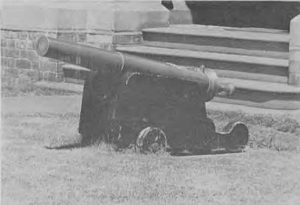
Arab workmanship at its best is demonstrated in this cannon patterned from a Spanish piece. Measuring 60 inches long with a bore of 1¾ inches, it bears an inscription in archaic Arabic which has been translated as ‘Craftsman Spear. 1789’. It is believed to have been captured from a Malayan pirate galley in the last century.
Portuguese brass cannon

This cannon and its trade companion were discovered on an island in Napier Broome Bay, Western Australia, by officers of the cruiser HMAS Encounter in 1916. The pieces are 43 inches long and have a bore of 1½ inches. One piece bears the royal crest of Portugal, a rose and crown. Evidence gathered from natives in the area where they were discovered suggests the pieces were brought ashore from a Portuguese ship in the mid-1550s. The cannon are in excellent condition although the piece bearing the crest has a broken dolphin handpiece.
Brass rigging mortar
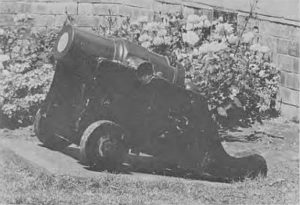
This mortar dates from about 1780. It measures 25 inches in length and has a bore of 3¼ inches. The piece bears no identification but was in common use up to Trafalgar. It was recovered from a captured German merchantman in World War I while being shipped to Germany for melting down.
Six pounder and four pounder cannon:
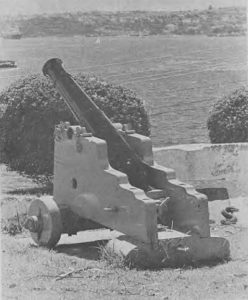
The Garden Island Battery was built in 1796 to repel a French invasion and this sixpounder iron cannon and its four-pounder companion, believed to be ex-HMS Sirius, was its armament. Both pieces bear the Royal crown of England and are in surprisingly good condition. The battery was abandoned in 1820 and the cannon were buried until rediscovered in the 1880s.
Small iron mortar:
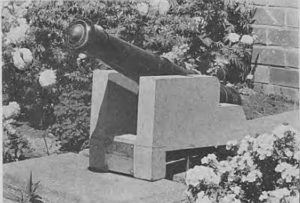
This small mortar is one of the best preserved pieces in the collection. It measures 29 inches in length and has a bore of three inches. The cannon bears no markings and is believed to be of merchant origin. The piece is dated about 1800.
Nine pounder muzzle loader:
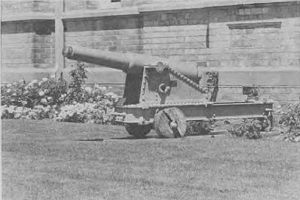
There are two examples of this nine pounder muzzle loader of 1877 in the collection. Both bear the Royal crest of Queen Victoria and the number 80. They are solidly mounted on riveted iron carriages and are fitted with elevating screws. The maker’s name is not known but it is believed to be Armstrong.
Strange to relate, the Royal Navy was manufacturing the muzzle-loader ten or fifteen years after the navies of the other powers had adopted breech loaders. The nine pounder was secondary armament on most vessels of the period. In principle, the piece was little different than those used in Elizabethan times.
Field piece:
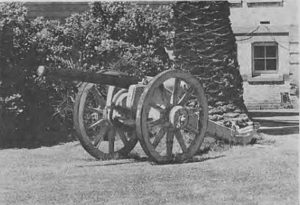
transition between muzzle loading and breech.
loading
This very interesting field piece marks the transition between muzzle loading and breech loading. Built in 1881 by Armstrong, it was converted to breech loading in 1890. The bore is two inches but a plate on the gun states the projectile weight as 22 pounds. The piece is believed to have been shipborne.




